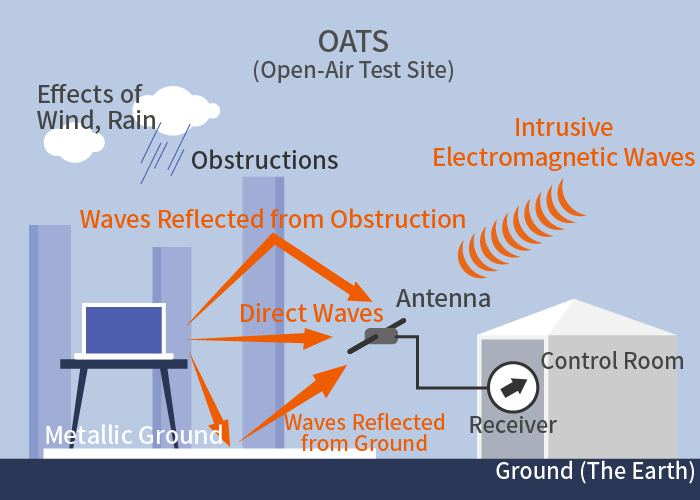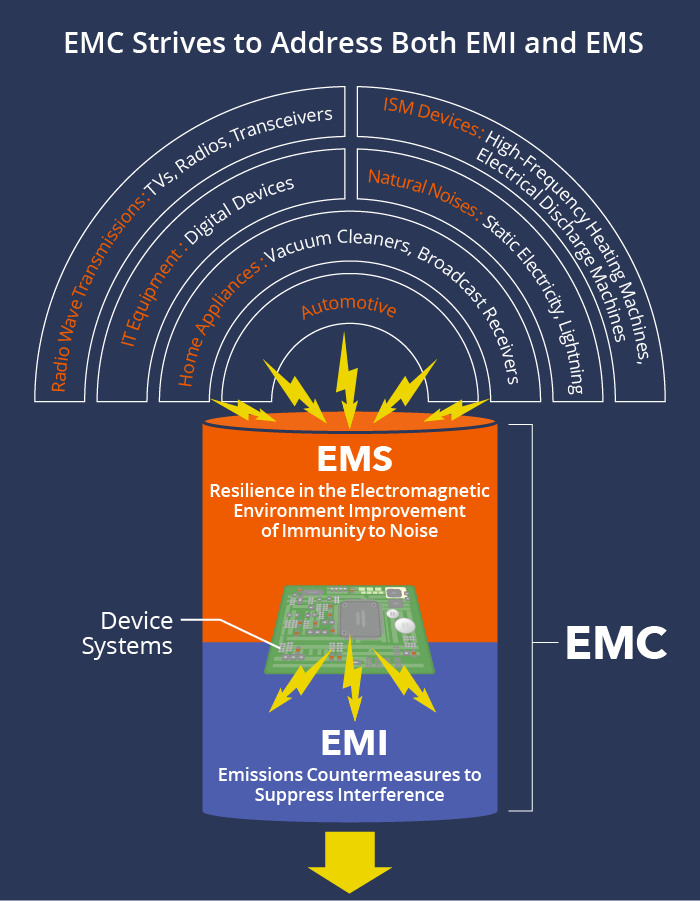Intro to EMC Topics
Components—Part 7: Varistors Protect Circuits by Absorbing Static Electricity

Just as a correct diagnosis and appropriate medication are required to treat an illness properly, it is important to know the mechanisms of noise generation and the principles of noise suppression components for applying noise countermeasures to electronic devices. In this article, we will discuss the varistor, a component that makes use of an intriguing property of electronic ceramics. The varistor is a dependable noise suppression component that protects circuits from instantaneous surges caused by static electricity.
Induced lightning triggers tsunami-like surges
Evening showers, sudden, torrential rains, and squalls in tropical regions are forms of localized, heavy rain falling from well-developed cumulonimbus clouds. Cumulonimbus clouds, also known as thunderclouds, are accompanied by lightning, which can sometimes strike power lines and cause power outages. Even if lightning does not strike, you may hear a grinding noise on your AM radio when thunderclouds approach. This is due to the electromagnetic waves generated by discharges between thunderclouds.
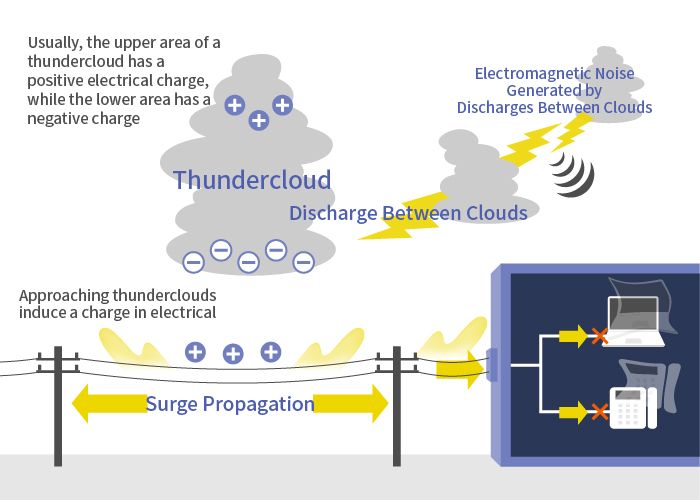
It is induced lightning—rather than lightning strikes—that causes extensive damage to electronic equipment. Because the lower area of a thundercloud usually has a negative electric charge, a positive electric charge is induced in power lines and telephone lines when a thundercloud approaches. Under these circumstances, if discharges between the clouds neutralize the negative charge inside the thundercloud, the positive charge held in the power lines and telephone lines will gush toward the ground (earth) like a tsunami. This phenomenon is called a lightning surge.
Although a lightning surge is a shock wave that only lasts for an instant, with voltages in the thousands of volts and currents reaching 1,000 to 10,000 amperes, it can easily destroy electronic equipment. When telephones containing ICs first became widespread, lightning surge countermeasures were still inadequate. In one instance, a lightning surge wiped out the telephones in an entire region.
Varistors and lightning arresters play active roles in preventing these mishaps. SPDs (surge protection devices) are installed at power generation, transmission and substation facilities, and other types are used in home power distribution, electronic equipment, and automobiles.
Varistors lose resistance and pass electrical current above a certain voltage
In the middle reaches of large rivers, areas known as detention basins are often constructed. When a river rises above a predetermined water level, it is temporarily filled to prevent flood damage downstream. A varistor is analogous to a detention basin. When a lightning surge enters, it acts as a bypass route to prevent the failure of electronic devices.
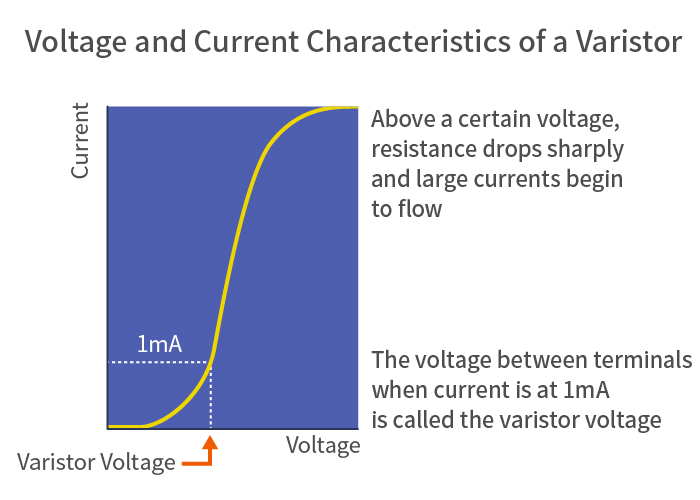
The electrical resistance of a material usually follows Ohm’s law, R = E / I (R: resistance, E: voltage, I: current). However, some semiconductors and electronic ceramics exhibit the property of changing resistance non-linearly depending on the voltage applied. For example, they show a high resistance value up to a certain voltage, but when that voltage is exceeded, the resistance drops sharply, and large currents begin to flow. Varistors are elements that make use of this property. The name “varistor” derives from the phrase “voltage-variable resistor.”
Electronic ceramics are polycrystalline materials composed of a vast number of fine crystal grains; zinc oxide is widely used as the main ingredient in varistors. The boundaries surrounding the crystal grains are highly resistive insulating layers that will not pass current up to a certain voltage, but when it is exceeded, the quantum-mechanical tunneling effect causes large currents to flow.
A voltage protection device consisting of two Zener diodes (constant voltage diodes) connected face-to-face is also used to protect ICs from surges, but it requires the combination of a capacitor, making it difficult to reduce the footprint. The solution is the multilayer chip varistor. It features a multilayered structure with alternating layers of zinc oxide ceramics and internal electrodes.
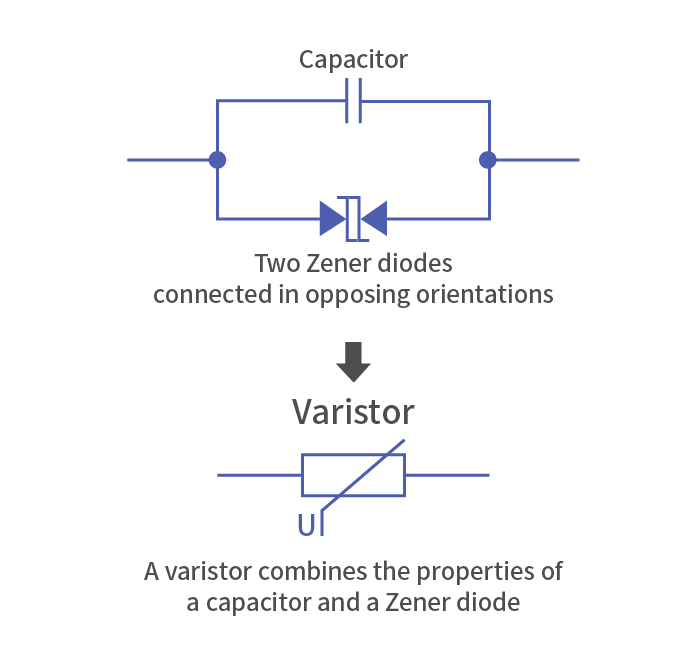
Eliminating static electricity discharges from the human body
Our modern life is surrounded by plastics, and the human body accumulates static electricity, akin to a thundercloud. As electronic devices have become more mobile in nature, we frequently touch them and connect them with cables. That is when electrostatic discharges often occur, causing IC circuits to malfunction—which is why multilayer chip varistors are being utilized increasingly.
Generally, the voltage between the terminals when the current is at 1mA is called the varistor voltage. To protect IC circuits driven at low voltages, the varistor voltage needs to be at a low value. Disk-type varistors used to have varistor voltages as high as 50 to 200 volts, but multilayer chip varistors have brought them down to 10 volts or so.
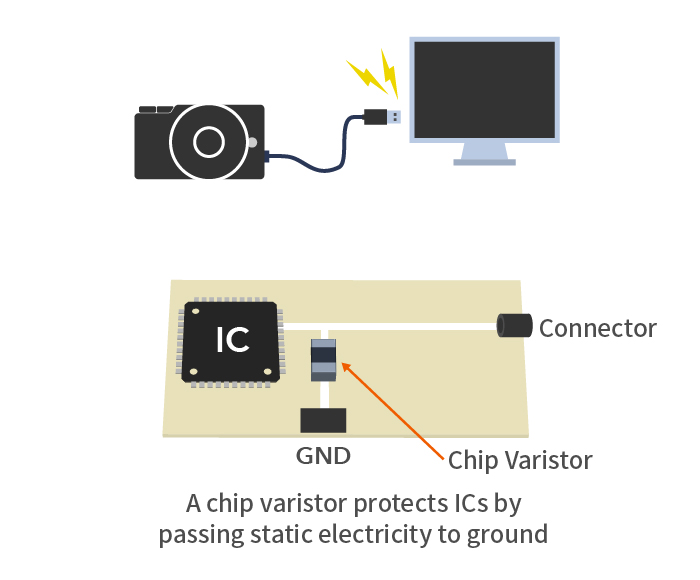
Low capacitance versions for use in high-speed signal lines
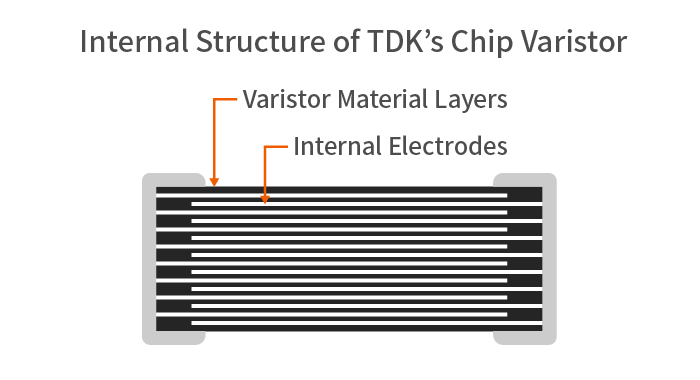
Since the capacitance component of a varistor affects high-speed signal lines like USB and HDMI, capacitance must be suppressed as much as possible. With conventional multilayer chip varistors, it has been difficult to reduce the capacitance while maintaining surge resistance. Capacitance is proportional to the electrodes’ surface area, but reducing electrodes sizes in an effort to lower capacitance results in degraded surge immunity.
To solve this dilemma, we chose a proprietary varistor material and perfected a method of making crystal grains finer and more uniform by leveraging advanced microstructure control techniques. TDK’s multilayer chip varistors were developed using these advanced technologies. When used in high-frequency IC circuits, interface circuits and high-speed signal lines such as USB and HDMI, they reliably prevent malfunctions and static electricity damage in electronic devices.
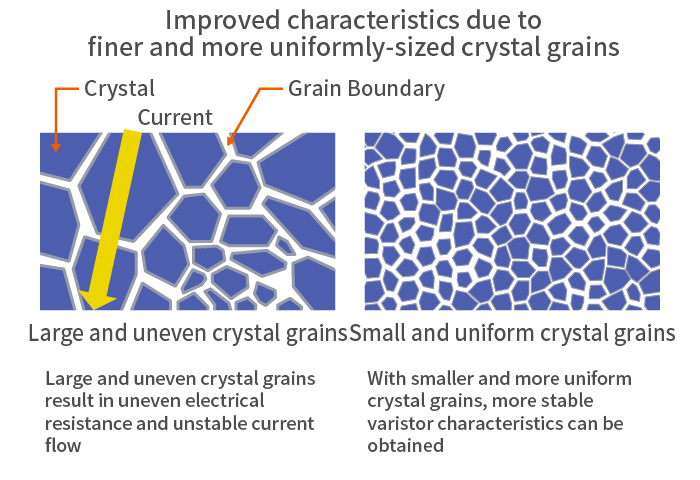
In addition to multilayer chip varistors, TDK offers a variety of varistor products, such as ring varistors that counter radiated noise from brush contact sparks in automotive DC motors. In combination with multilayer capacitors with leads and power line chokes, these products protect the contacts of DC motors effectively and extend their service lives.
TDK is a comprehensive electronic components manufacturer leading the world in magnetic technology



